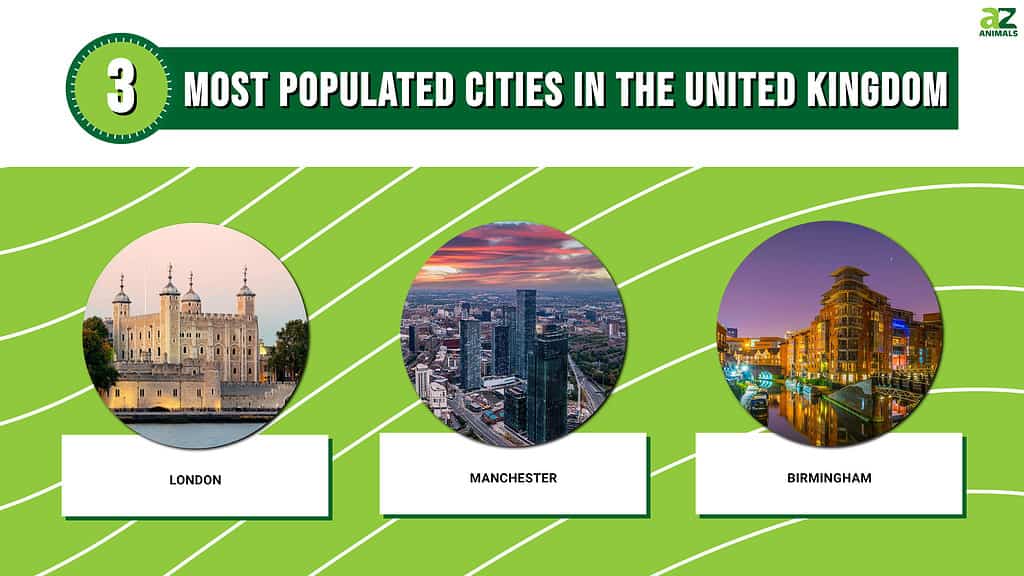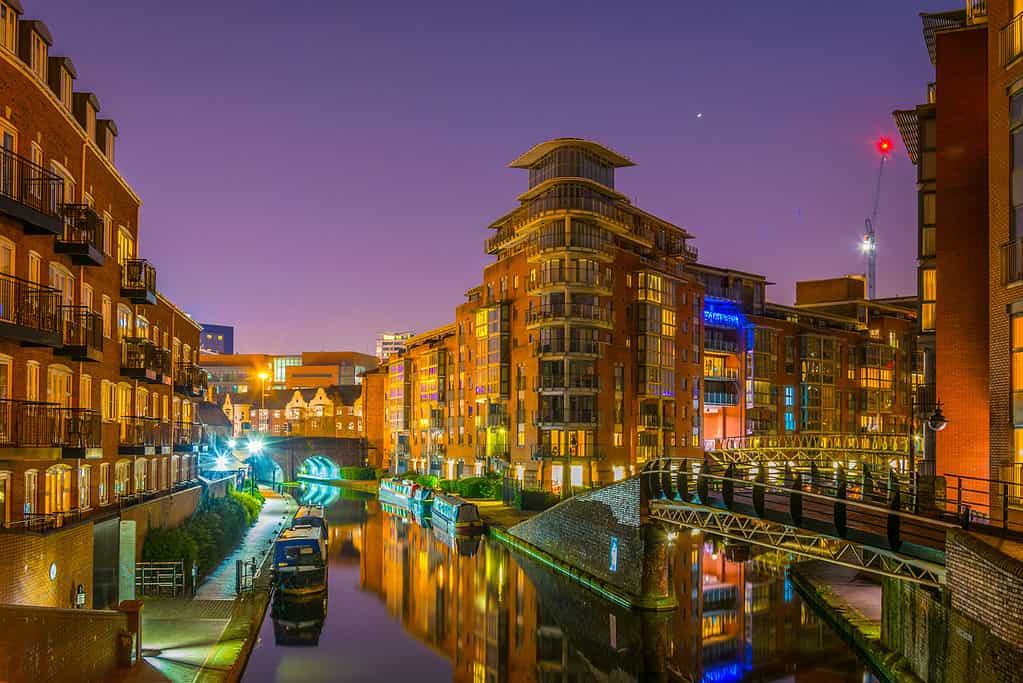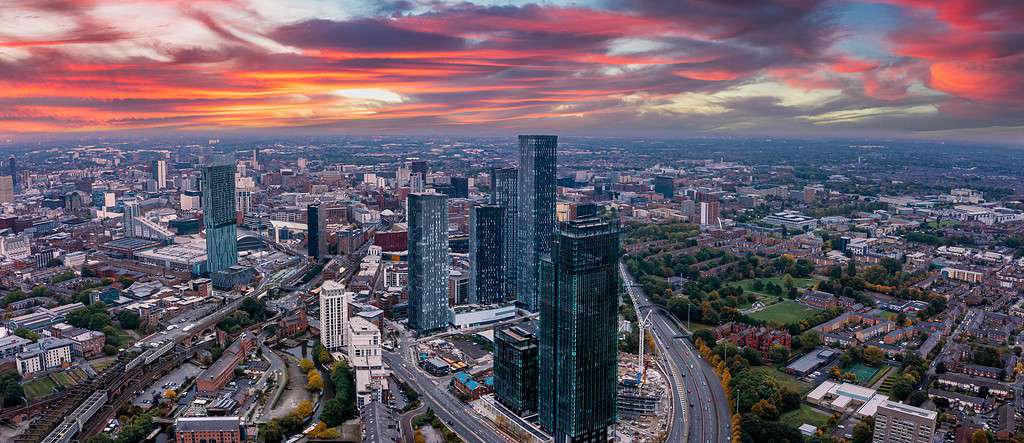The United Kingdom is a country rich in history, culture, and diversity. It is home to many bustling cities that are hubs of growth, innovation, and development. In this article, we will take a closer look at the three most populated cities in the UK – London, Manchester, and Birmingham. From their towering skyscrapers to their vibrant nightlife scenes, these cities offer visitors and residents alike an endless array of opportunities for adventure and exploration. Join us as we delve into what makes these urban centers so unique and discover why they continue to draw people from all over the world year after year.

About the UK
The United Kingdom of Great Britain and Northern Ireland, also referred to as the UK or Britain, is a nation in Europe that lies off the northwestern coast of the continent. The United Kingdom is made up of the British Isles’ many smaller islands, as well as England, Scotland, Wales, and Northern Ireland. The total area of the United Kingdom is 242,495 square kilometers (93,628 square miles), with an estimated population of over 67 million people, making it the 21st most populated country in the world.
With a monarch and a parliamentary system of government in charge of the entire country, it is not uncommon to find monuments and artifacts that indicate a time in the past when the country was still under a full monarchy. These artifacts, along with the country’s nearly 68 million inhabitants, are scattered across different cities. What are the most populated cities in the United Kingdom? This article explores the three most populated cities in the UK, their history, and why people, both locals and tourists, love them.
3. Birmingham — 2,643,000

Birmingham is regarded as the Midlands’ social, cultural, financial, and commercial hub.
©iStock.com/trabantos
Birmingham, located in the West Midlands of England, is a bustling city with a population of 2,643,000 people. It is the third largest city in the United Kingdom and has been an important commercial center since the industrial revolution. The city boasts a diverse economy that includes manufacturing, finance, and service sectors.
The history of Birmingham can be traced back to as far as the 6th century AD when it was known for being a small market town. Around 1150-1166, it began to develop as a commercial center. Then, during the Industrial Revolution period in Britain (18th-19th century), Birmingham experienced significant growth due to its location at the center of England’s canal network and its ability to produce metal products such as guns and screws.
Today, Birmingham is home to many cultural landmarks, including Symphony Hall – one of Europe’s finest concert halls; Cadbury World – which provides visitors with an experience into chocolate-making; and Aston Hall – a Jacobean mansion house that dates back to 1618. Additionally, it has several universities, including the University of Birmingham – one of the UK’s leading research institutions.
In terms of transport links within the UK and internationally, Birmingham Airport caters to both domestic flights across Britain as well as international destinations around Europe and beyond. Whilst there are train services from London Euston railway station reaching Birmingham New Street Station within just over one hour journey time.
Overall, based on its rich history, cultural offerings, and strong economic presence, Birmingham remains an attractive destination for tourists, lifestyle seekers, and businesses alike in modern-day Britain.
2. Manchester — 2,767,000

Manchester is the second largest city in the UK.
©RAW-films/Shutterstock.com
Manchester, located in the northwest region of England, is a vibrant city known for its rich cultural heritage and lively music scene. With a population of 2,767,000 people, Manchester is the second largest city in the United Kingdom after London.
The city has a fascinating history that dates back to Roman times when it was first established as a military fortification in 79 AD. Over the centuries, Manchester grew into an industrial powerhouse during the Industrial Revolution, with textiles being one of its primary industries.
Today, visitors can still see remnants of this historical significance throughout Manchester’s architecture and landmarks, such as The John Rylands Library and Bridgewater Hall. In addition to these historic sites, tourists can also enjoy exploring modern attractions like MediaCityUK and HOME art center.
Manchester is also well-known for its football culture with two world-renowned football clubs – Manchester United and Manchester City. Fans from all over come to watch their favorite teams play at Old Trafford or Etihad Stadium, respectively.
But perhaps what makes Manchester truly unique is its thriving music scene which gave birth to legendary bands such as Oasis and Joy Division. Visitors can experience live music at venues such as Albert Hall or Night & Day Cafe.
In conclusion, whether you’re interested in history, sports, or music – there’s something for everyone in Manchester!
1. London — 11,262,000

London is the most populated city in the United Kingdom.
©iStock.com/rabbit75_ist
London is the most populated city in the United Kingdom, with almost 12 million inhabitants. Apart from being the most populated city, it is also the capital city of England. London is also one of the world’s oldest cities, with its history going back farther than two millennia. Roman sovereignty over London began in 43 AD and lasted until the fall of the Roman Empire in the fifth century AD. The city was named Londinium at the time, the name the Romans gave the town, and it had 50,000 residents by the third century, mostly because of the influence of its port. During the ninth century, the town suffered numerous Viking attacks. Danish immigrants moved there because of these attacks, promoting trade in the town and turning it into the first urban center in England.
The port of London developed into a major European hub for shipping around the 14th century. The port’s relevance grew even more in the 15th century because of the local textile industry’s influence. London continued to grow throughout the centuries, welcoming more immigrants and establishing more industries. London is one of the most captivating cities in the world and one of the most popular travel destinations. It’s no surprise that the city attracts more than 20 million tourists annually with its breathtaking tourist sites and exciting activities. Some of the top tourist sites to visit include Buckingham Palace, the Tower of London, and the National Gallery.
Summary of the 3 Most Populated Cities in the United Kingdom
| Rank in Population | Name of City | Founded | Population |
|---|---|---|---|
| 1. | London | 43 AD | 11,262,000 |
| 2. | Manchester | 79 AD | 2,767,000 |
| 3. | Birmingham | 5th or 6th Century | 2,643,000 |
The photo featured at the top of this post is © iStock.com/Alexey_Fedoren
Sources
- , Available here: https://worldpopulationreview.com/countries/cities/united-kingdom
- , Available here: https://www.geonames.org/GB/largest-cities-in-united-kingdom.html
- , Available here: https://population.mongabay.com/population/united-kingdom/
- , Available here: https://www.ons.gov.uk/visualisations/censuspopulationchange/E08000012/
Thank you for reading! Have some feedback for us? Contact the AZ Animals editorial team.






